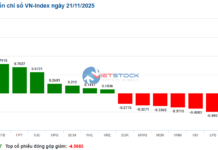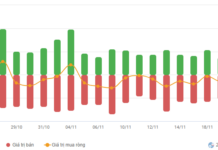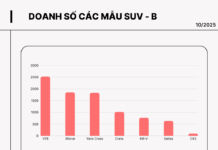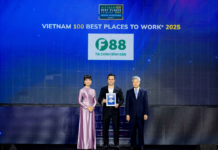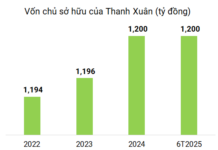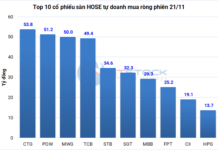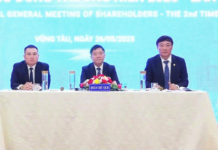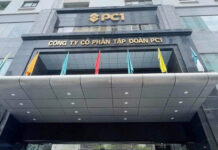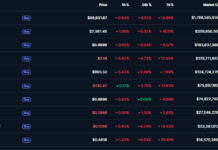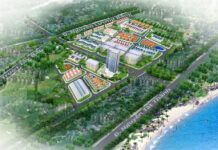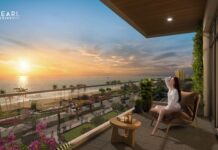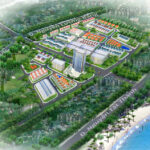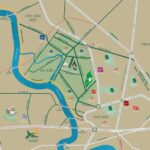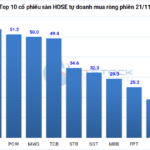Last May, the 34th Conference of the Provincial Party Committee for the 11th term (expanded) considered and provided opinions on the provincial planning scheme for the 2021–2030 period, with a vision towards 2050.
According to the Ministry of Planning and Investment, Binh Duong province has paid special attention to regional linkage orientation and included this content in the planning scheme, placing the province in a relationship of mutual benefit to maximize comparative advantages in the region.
The planning scheme shapes the development space of Binh Duong province into three dynamic regions. The first is the Gateway Urban Region (Thuan An City and Di An City), which functions as a smart and modern city and serves as the economic and financial center for the entire Southeast region. Therefore, the main task is to upgrade, rebuild, and renovate the urban area.
The second is the Central Core Region (Thu Dau Mot City, Tan Uyen City, Ben Cat City, and Bau Bang district), which serves as the core of a smart city, based on the development of science and technology and a new industry-urban-service model. It is a growth pole and a driving force for the province’s development. With the formation of information technology parks and industrial parks, it aims to gradually establish a provincial science and technology park and shape the development of high-quality healthcare, cultural, educational, commercial, and service fields. This region also aims to attract industries such as electricity, electronics, chips, and semiconductor technology.
The third is the Northern Urban Region (Phu Giao district, Dau Tieng district, and Bac Tan Uyen district), which functions as a green reserve area, developing high-tech agriculture, eco-tourism, and green and eco-industrial sectors. It serves as a satellite region for the province after the central region is fully developed, in conjunction with the relocation of industries from the south.
In terms of industrial development orientation, from now until 2030, the province has planned for approximately 18,500 hectares of industrial and urban land. Additionally, an estimated 18,000–20,000 hectares are required for the development of urban and service areas along belt roads and expressways to form an economic corridor for the entire region, connecting the Tay Ninh border gate, Cai Mep port, and Long Thanh airport.
The province also aims to shape an ecological corridor along the Dong Nai River and an ecological corridor along the Saigon River and Dau Tieng Lake to develop high-quality urban, service, and commercial areas.
Another focus is shaping the development space for cultural, sports, healthcare, educational, and scientific fields by forming a complex in Bau Bang district, spanning approximately 1,500 hectares. This complex will host events of national stature, boosting the development of commercial and service sectors and contributing to a strong shift in the economic structure towards increasing the proportion of the service sector.
These spatial development orientations and key sectors will contribute to achieving the goal of an average GRDP growth rate of about 10% during the 2021–2030 period and help the province overcome the middle-income trap.
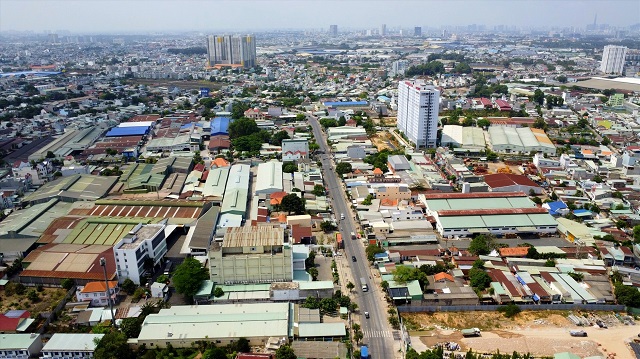
A view of Di An City, Binh Duong
|
As a result of these favorable conditions, numerous foreign businesses have invested in Binh Duong. Lego, Pandora, and Tetra are among the prominent FDI enterprises that have announced investments and commenced construction of factories worth up to billions of USD in the industrial hub of Southeast Vietnam.
In the real estate sector, at the end of 2023, the Cosmos Initia – TT Capital – Koterasu Partner joint venture, a member of the Daiwa House Group, announced plans to invest approximately 150 million USD over five years. Their goal is to introduce 1,000 apartments to the market each year, targeting affordable housing for the local population.
The joint venture’s first project is planned on a site of over 1.7 hectares in Di An City, near Vincom Plaza Di An. The project comprises approximately 2,000 apartments with an average area of less than 60 square meters each. This is intended to be the first multi-style apartment complex in Di An, featuring a standard Japanese living environment, located adjacent to Thu Duc City in Ho Chi Minh City, with average prices below 2 billion VND per unit.
Representing Cosmos Initia, Mr. Keisuke Muraoka shared that the company originated in Tokyo, where there was a housing shortage. Even in Japan, the company has always focused on the mid-range segment. When entering the Vietnamese market, Cosmos Initia, as a member of the Daiwa House Group, also targets similar customers with real housing needs, hence their decision to focus on the mid-range segment.
In April, three Japanese enterprises, Sumitomo Forestry, Kumagai Gumi, and NTT Urban Development, along with Kim Oanh, received approval for their investment in the One World project. This 50-hectare project is located in Thuong Giao Ward, Thuan An City, at the intersection of Binh Duong Boulevard (National Highway 13), Nguyen Thi Minh Khai Street, and Belt Road 3.
A well-established foreign investor in Binh Duong is CapitaLand Development. In 2021, the Singaporean investor, in collaboration with Becamex IDC, embarked on their largest project in Vietnam to date, with a total development value of 1.12 billion Singapore dollars (equivalent to 18,330 billion VND). The project focuses on residential blocks spanning 18.9 hectares, and it is expected to provide over 3,700 apartments and long-term ownership homes to accommodate approximately 13,000 residents.
Mr. Ronald Tay, CEO of CLD (Vietnam), emphasized that Binh Duong is one of the top provinces in Vietnam for attracting foreign direct investment. CLD’s residential project is strategically located in the new city of Binh Duong, where urbanization will increase the demand for international-standard housing from young families, experts, and foreigners working in nearby industrial parks and other areas like Thu Duc City.
The new city has also attracted investments from the Tokyu Corporation (Japan), which is developing the Tokyu Binh Duong Garden City project through Becamex Tokyu Company Limited. Completed projects include Sora Garden 1 and 2 apartments, The View apartments, Hakura and Midori Park residential areas, Hikari commercial area (phase 1), and the Viet Hoa International School.
Thai investors, specifically A Asset Limited, have also shown interest in Binh Duong through their collaboration with Bcons to develop 11 real estate projects, offering nearly 9,000 apartments to the market.
According to a recent report by DKRA, Binh Duong leads in land supply and ranks second in apartment supply and third in townhouse/villa supply in the second quarter of 2024 in Ho Chi Minh City and its vicinity. It is the main contributor to new apartment supply and sales, accounting for 85% and 89%, respectively, of the market’s new supply. The province is also recognized for its rapid progress in key transportation projects in the region.

